Field Trip: Two Bridges
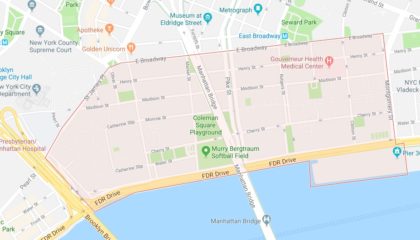 I have a vague recollection from five or so years ago of first hearing that Two Bridges was the name of a neighborhood. I didn’t believe it. How had I lived in Lower Manhattan for two decades and never heard of it? Two Bridges began entering further into my consciousness, pushed into the limelight by big real estate (always on the lookout for new areas to plant towers) and hipster sprawl from the Lower East Side.
I have a vague recollection from five or so years ago of first hearing that Two Bridges was the name of a neighborhood. I didn’t believe it. How had I lived in Lower Manhattan for two decades and never heard of it? Two Bridges began entering further into my consciousness, pushed into the limelight by big real estate (always on the lookout for new areas to plant towers) and hipster sprawl from the Lower East Side.
Google Maps says the neighborhood expands far beyond the boundaries of the Brooklyn and Manhattan Bridge, and arguing with our information overlords is futile. I had previously explored the area under the Brooklyn Bridge, but I had never spent any quality time further north/east. My friend Andrea and I dipped a toe in a few months ago, but the weather was a turn-off. Before we ditched, we went into the New York Mart mall under the Manhattan Bridge at 75 E. Broadway, on the recommendation of other friends. It was like watching gentrification in process. But let’s come back to that….
First, a warning: This post is going to go on forever, because I loved walking around Two Bridges. Not the housing projects, which are pretty grim. No offense to the folks who live there! All offense the people who designed them! They’re bulky and unappealing, with no life at street level.
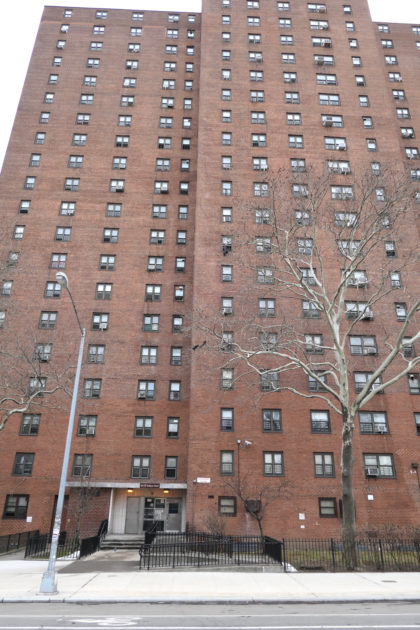
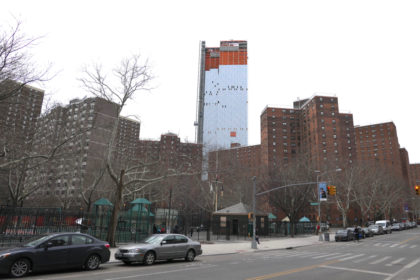 Gee, I can’t imagine why Two Bridges residents were upset by One Manhattan Square, as the tower looming over the neighborhood is being marketed. It’s an ill fit for the area, and it ruins views of the Manhattan Bridge. The weirdly shaped ramp/base thing is no treat, either.
Gee, I can’t imagine why Two Bridges residents were upset by One Manhattan Square, as the tower looming over the neighborhood is being marketed. It’s an ill fit for the area, and it ruins views of the Manhattan Bridge. The weirdly shaped ramp/base thing is no treat, either.
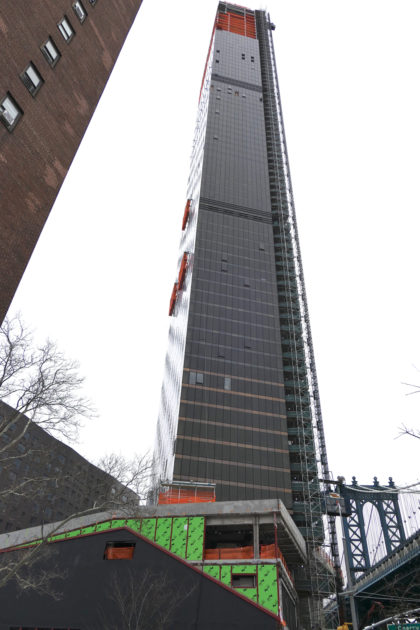 Enough about that. Mainly, I walked all the way down Henry Street, and then back along Madison Street, wandering the side streets when something caught my eye. What I noticed first was how wonderful many of the buildings are. And how vulnerable: There don’t appear to be historic districts, and I suspect the owners like it that way. Maintaining a building protected by landmarks laws is expensive, and this is not a neighborhood with money to burn.
Enough about that. Mainly, I walked all the way down Henry Street, and then back along Madison Street, wandering the side streets when something caught my eye. What I noticed first was how wonderful many of the buildings are. And how vulnerable: There don’t appear to be historic districts, and I suspect the owners like it that way. Maintaining a building protected by landmarks laws is expensive, and this is not a neighborhood with money to burn.
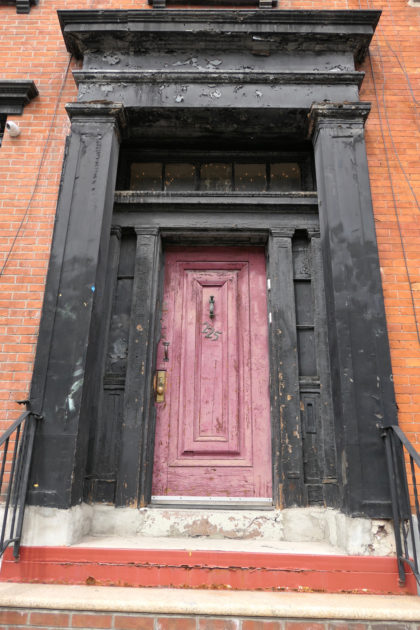
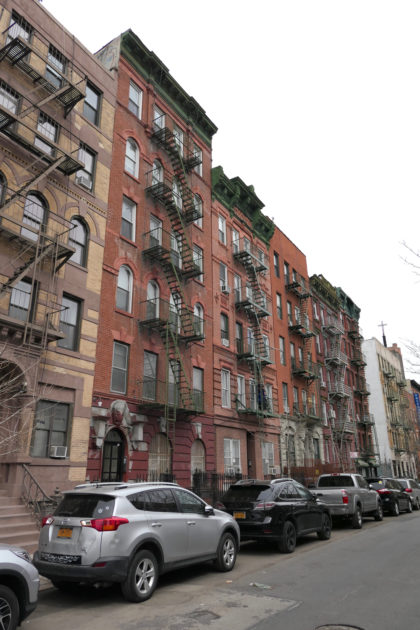
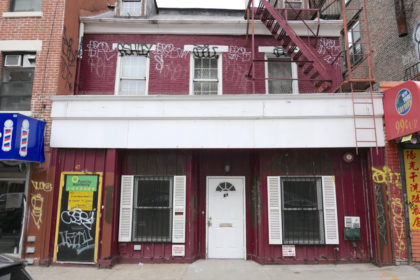
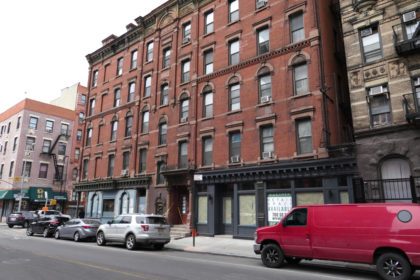
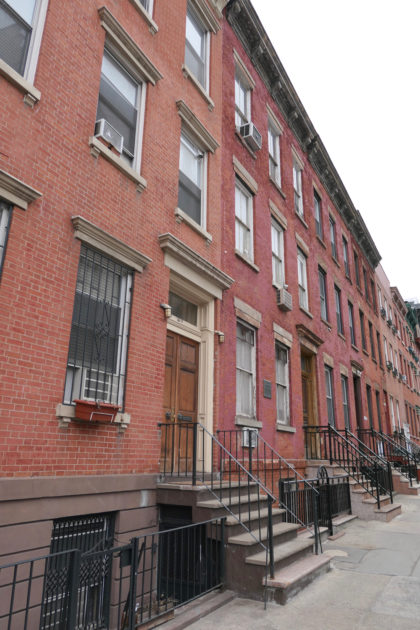 The townhouse at center in the last photo is a Registered National Historic Landmark: “The Alfred E. Smith House is a historic rowhouse at 25 Oliver Street,” says Wikipedia. “Probably built in the late 19th century, it was the home of four-time governor of New York State and 1928 Democratic presidential candidate Alfred E. Smith (1873-1944). Smith lived here from 1907 to 1923.” Perhaps one day Cynthia Nixon’s home will be a landmark…. A question: Is it possible she thinks she can be governor because she’s been closely watching Bill de Blasio attempt to be mayor?
The townhouse at center in the last photo is a Registered National Historic Landmark: “The Alfred E. Smith House is a historic rowhouse at 25 Oliver Street,” says Wikipedia. “Probably built in the late 19th century, it was the home of four-time governor of New York State and 1928 Democratic presidential candidate Alfred E. Smith (1873-1944). Smith lived here from 1907 to 1923.” Perhaps one day Cynthia Nixon’s home will be a landmark…. A question: Is it possible she thinks she can be governor because she’s been closely watching Bill de Blasio attempt to be mayor?
As with any old neighborhood, there are grand churches.
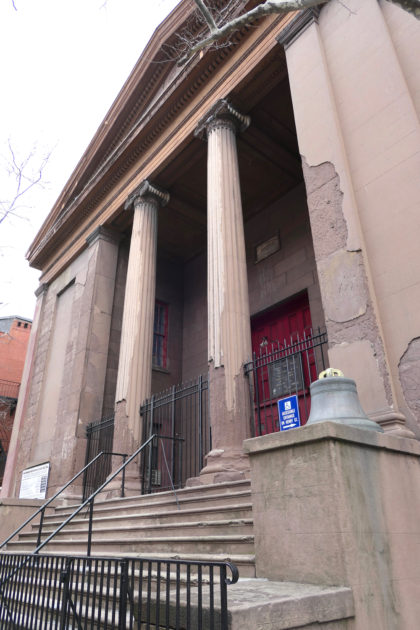
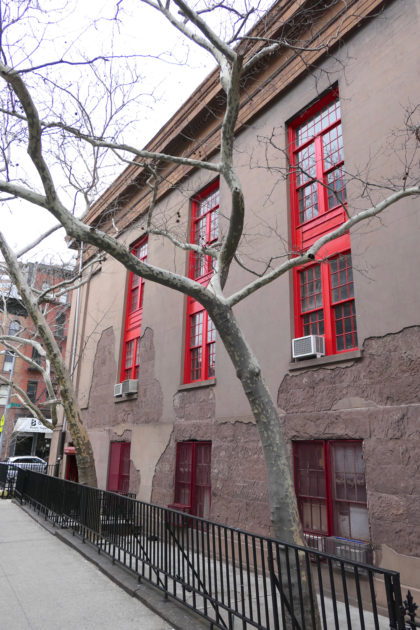
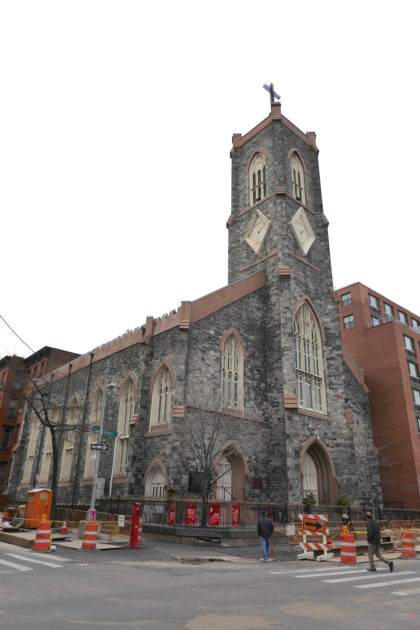
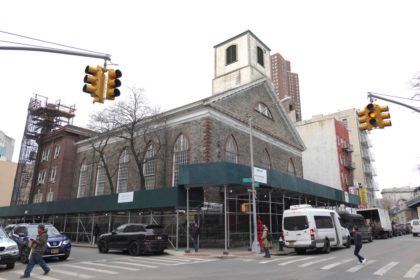
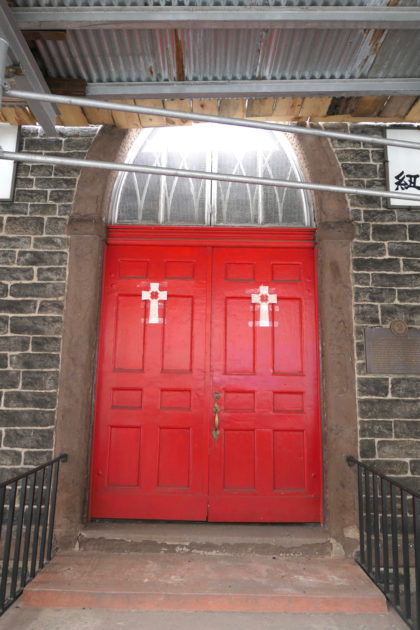
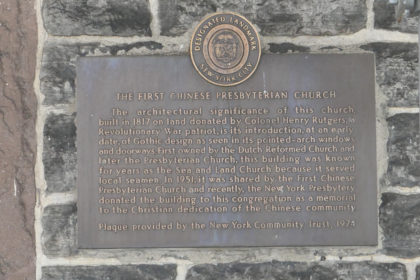 You can click the photo above to learn about that last church, which was built in 1817. (I loved the crosses taped to the door.) But the charm of Two Bridges goes beyond the architecture. It feels like a mix of the old Lower East Side, the new Lower East Side, and Chinatown. Depending on the block, the atmosphere changes. Parts that reminded me of the Lower East Side’s grittier days: a sweet park memorial; Mechanics Alley (best street name downtown?); a creepy vignette; and the street sign honoring the Ancient Order of Hibernians (“America’s oldest Irish Catholic Fraternal Organization“).
You can click the photo above to learn about that last church, which was built in 1817. (I loved the crosses taped to the door.) But the charm of Two Bridges goes beyond the architecture. It feels like a mix of the old Lower East Side, the new Lower East Side, and Chinatown. Depending on the block, the atmosphere changes. Parts that reminded me of the Lower East Side’s grittier days: a sweet park memorial; Mechanics Alley (best street name downtown?); a creepy vignette; and the street sign honoring the Ancient Order of Hibernians (“America’s oldest Irish Catholic Fraternal Organization“).

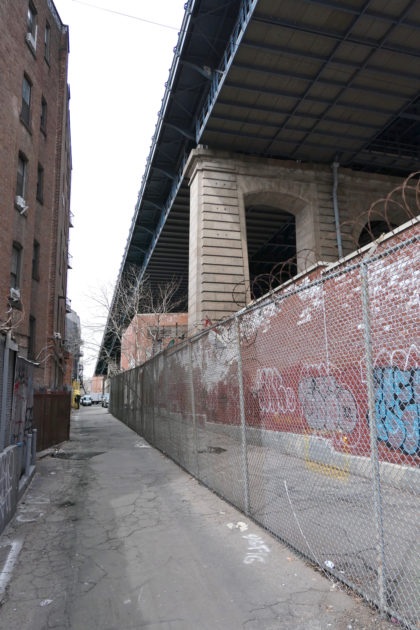
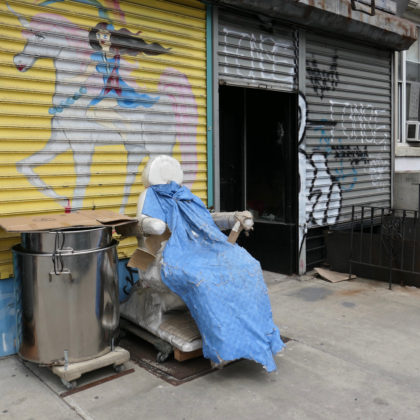
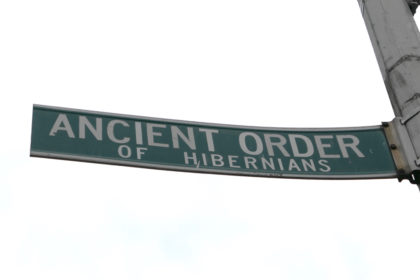 There was a lot that felt like Chinatown, but much of it wasn’t all that photogenic. I will say that when I stopped to admire some mini mangoes at a fruit-and-vegetable vendor, the worker was super friendly, which tends not to be the case in Chinatown proper. Anyway, I did like this pretty display of cards.
There was a lot that felt like Chinatown, but much of it wasn’t all that photogenic. I will say that when I stopped to admire some mini mangoes at a fruit-and-vegetable vendor, the worker was super friendly, which tends not to be the case in Chinatown proper. Anyway, I did like this pretty display of cards.
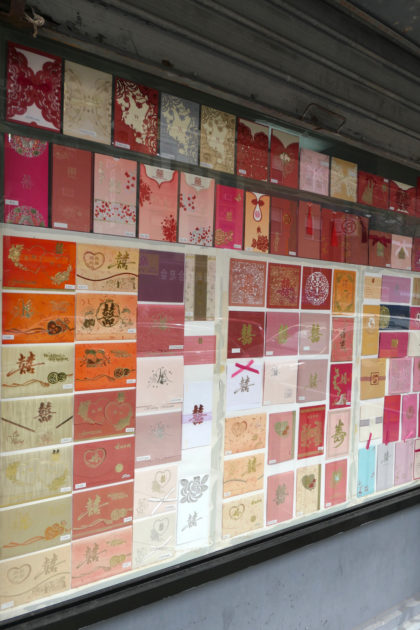 What interested me most about Two Bridges was where the cool kids of the Lower East Side have started colonizing the area. I don’t judge that at all; I happen to love nothing more than a neighborhood where the old and the new have found a way to live side by side. Even when you come upon something clearly new, Two Bridges doesn’t have the remade feel of, say, Ludlow Street or Orchard Street. I stayed off of East Broadway for that reason—as interesting as it gets on the far side of the Manhattan Bridge (did you know there’s a cheese and beer shop called Malt & Mold, and an ice cream shop called Ice & Vice?), you could be anywhere on the Lower East Side. Further away from E. Broadway, the cool moments are rarer, and more special for it. I’m going to insist that Adam join me at Les Enfants de Bohème one day for lunch or dinner; it was opened by Stéfan Jonot, who used to have Les Enfants Terribles on Canal Street. It also has a café annex.
What interested me most about Two Bridges was where the cool kids of the Lower East Side have started colonizing the area. I don’t judge that at all; I happen to love nothing more than a neighborhood where the old and the new have found a way to live side by side. Even when you come upon something clearly new, Two Bridges doesn’t have the remade feel of, say, Ludlow Street or Orchard Street. I stayed off of East Broadway for that reason—as interesting as it gets on the far side of the Manhattan Bridge (did you know there’s a cheese and beer shop called Malt & Mold, and an ice cream shop called Ice & Vice?), you could be anywhere on the Lower East Side. Further away from E. Broadway, the cool moments are rarer, and more special for it. I’m going to insist that Adam join me at Les Enfants de Bohème one day for lunch or dinner; it was opened by Stéfan Jonot, who used to have Les Enfants Terribles on Canal Street. It also has a café annex.
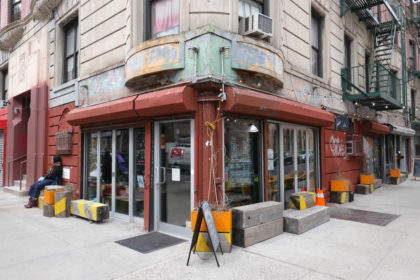
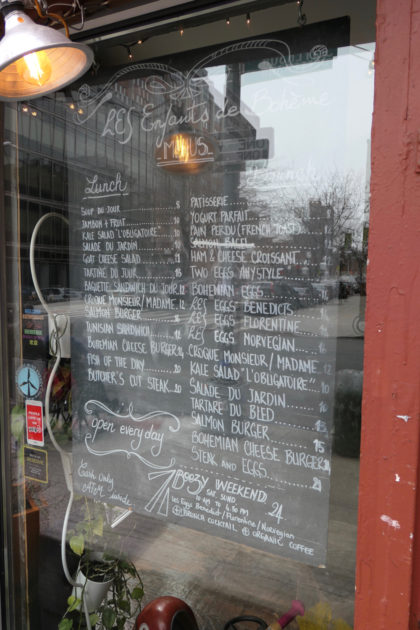
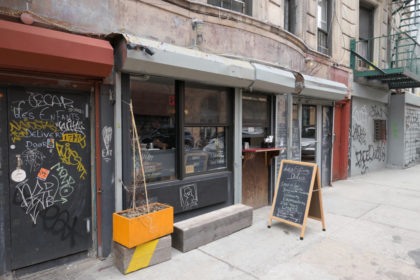 Mr. Fong’s could also be worth a visit, if only to admire the cornice over the door.
Mr. Fong’s could also be worth a visit, if only to admire the cornice over the door.
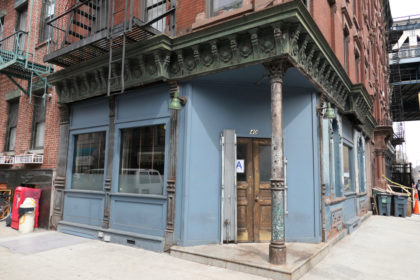
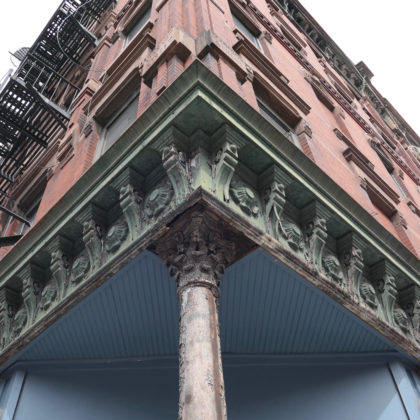 There’s a bar on Clinton, in the building that goes by 221 E. Broadway, but it has no sign and I couldn’t find anything online about it.
There’s a bar on Clinton, in the building that goes by 221 E. Broadway, but it has no sign and I couldn’t find anything online about it.
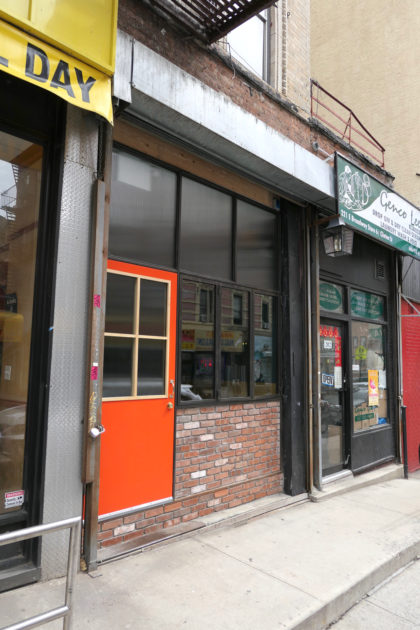
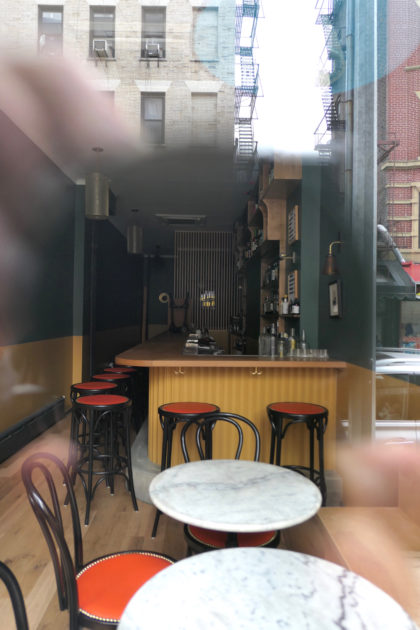 The business I loved the most is Oliver Coffee, on that pretty block of Oliver Street where Alfred E. Smith lived. It opened around a year ago, and it’s adorable: Besides coffee, the café has a newsstand (where Thrasher sits next to Foreign Policy) that also functions as a shop selling “tasty snacks from around the world.” This is the kind of establishment that makes you realize how staid Tribeca has become.
The business I loved the most is Oliver Coffee, on that pretty block of Oliver Street where Alfred E. Smith lived. It opened around a year ago, and it’s adorable: Besides coffee, the café has a newsstand (where Thrasher sits next to Foreign Policy) that also functions as a shop selling “tasty snacks from around the world.” This is the kind of establishment that makes you realize how staid Tribeca has become.
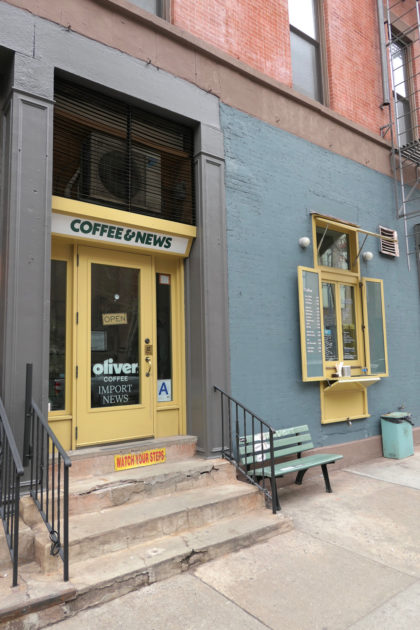
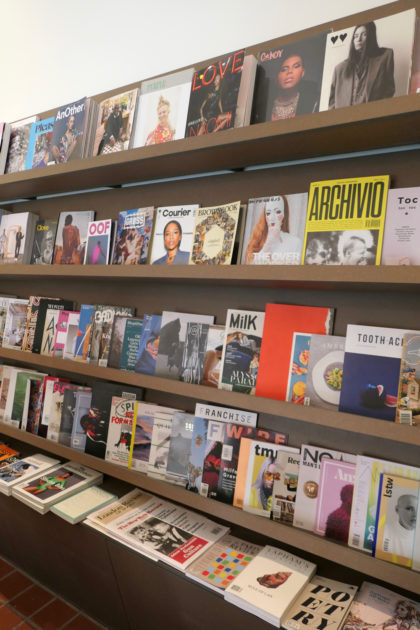
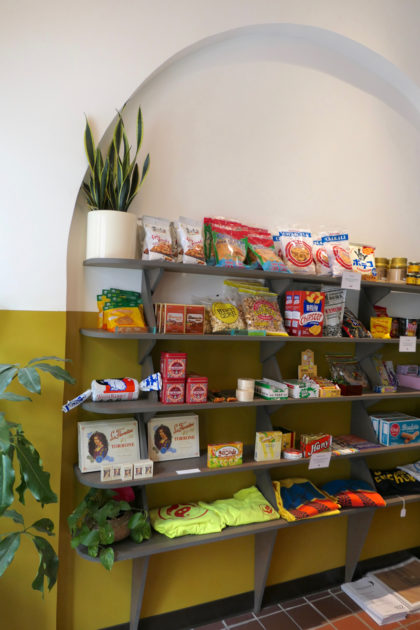 Other signs of change: knit art, uninspired condos, and a handful of galleries. Geronimo isn’t actually a gallery; it appears to be the office of Jihan Zencirli (a.k.a. Geronimo), who makes balloon art.
Other signs of change: knit art, uninspired condos, and a handful of galleries. Geronimo isn’t actually a gallery; it appears to be the office of Jihan Zencirli (a.k.a. Geronimo), who makes balloon art.
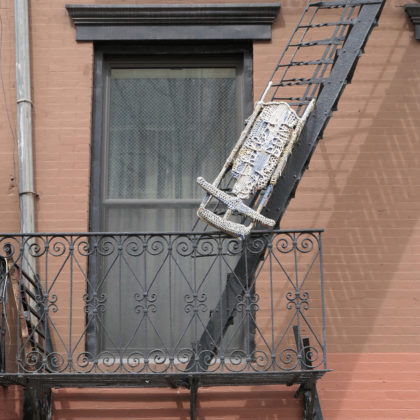
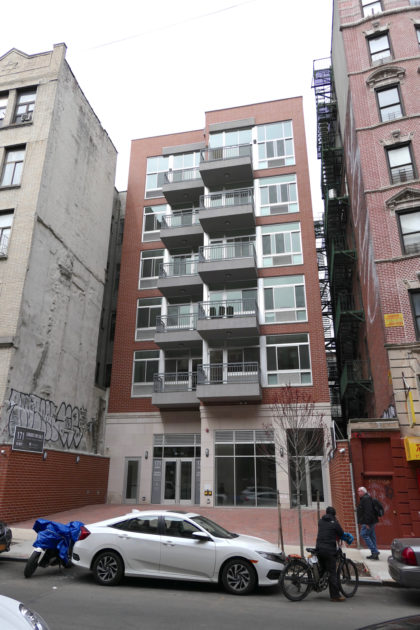
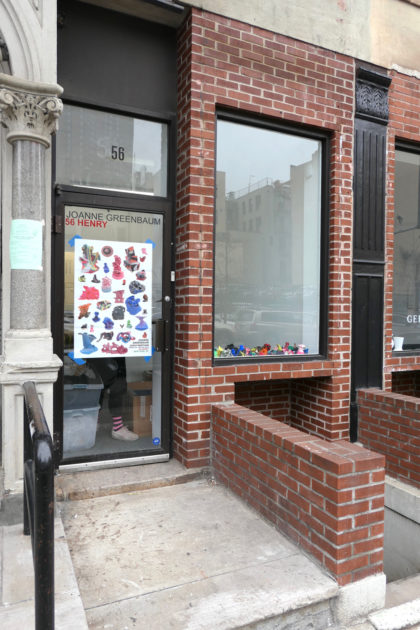
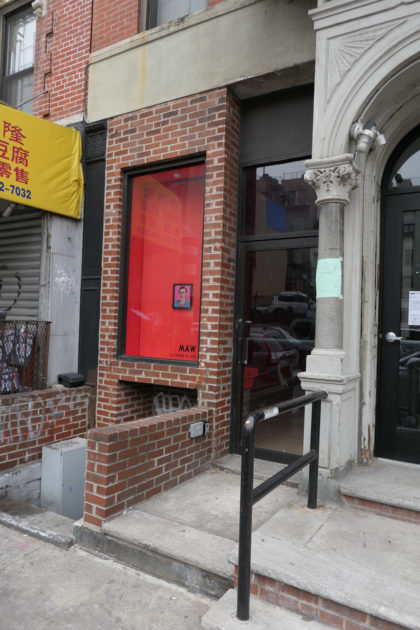
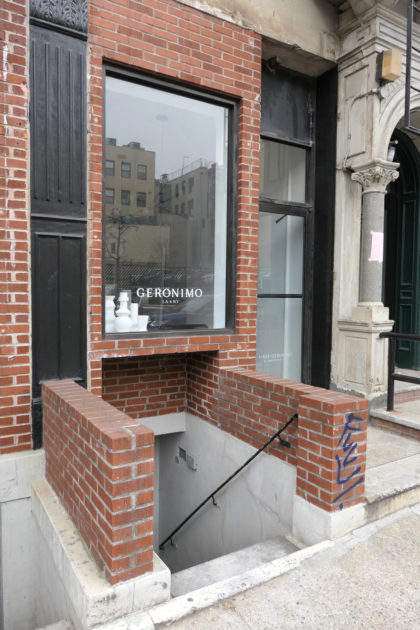 If the Brooklyn Bridge helps frame the neighborhood, the Manhattan Bridge dominates it: A better name for Two Bridges might be DUMB. I don’t know that I’d want to hear the subways rattling across the bridge every day of my life, but for a visitor, they sure add character. And I don’t think I’ve ever walked under the bridge, except for along the East River.
If the Brooklyn Bridge helps frame the neighborhood, the Manhattan Bridge dominates it: A better name for Two Bridges might be DUMB. I don’t know that I’d want to hear the subways rattling across the bridge every day of my life, but for a visitor, they sure add character. And I don’t think I’ve ever walked under the bridge, except for along the East River.
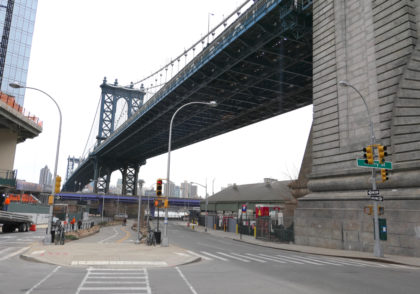
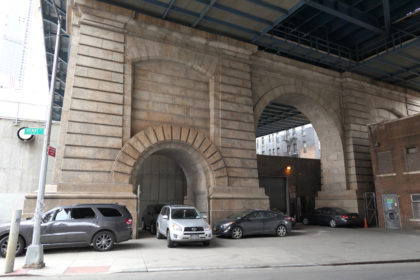
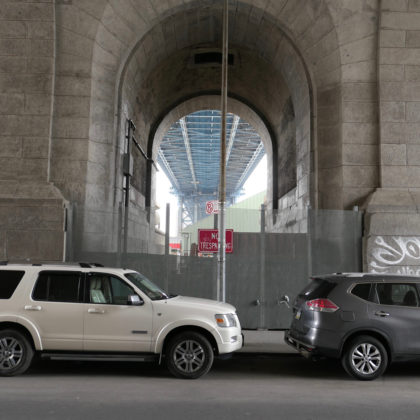
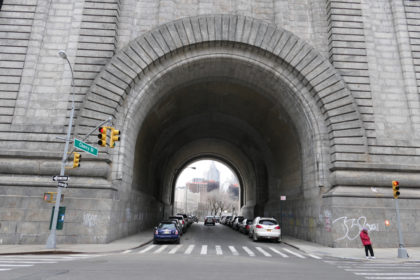 Somehow, there’s a tree stump tucked inside the middle of the Cherry Street tunnel pictured above!
Somehow, there’s a tree stump tucked inside the middle of the Cherry Street tunnel pictured above!
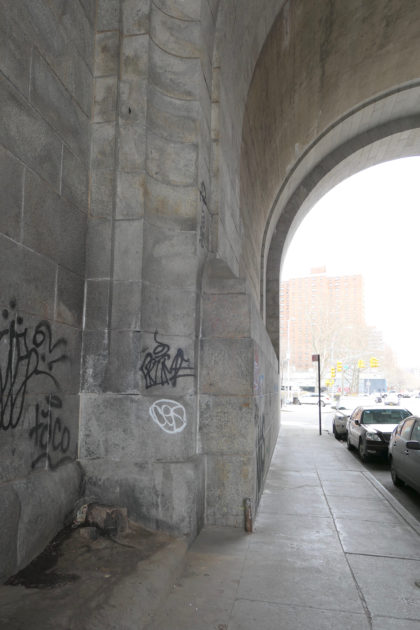 Between the Hudson River Park Skate Park and the Coleman Playground Skate Park, skateboarders sure do get prime real estate.
Between the Hudson River Park Skate Park and the Coleman Playground Skate Park, skateboarders sure do get prime real estate.
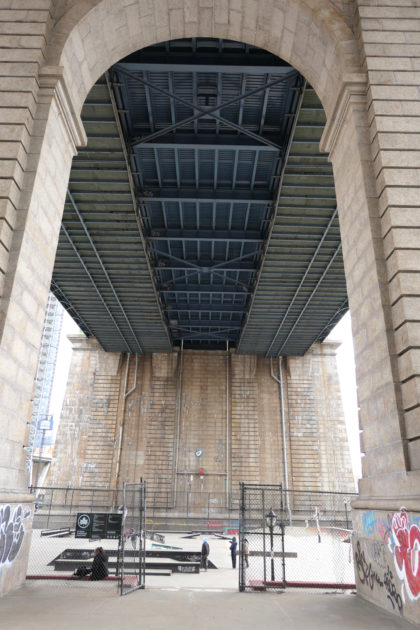 Whoever left that ladder there was asking for it.
Whoever left that ladder there was asking for it.
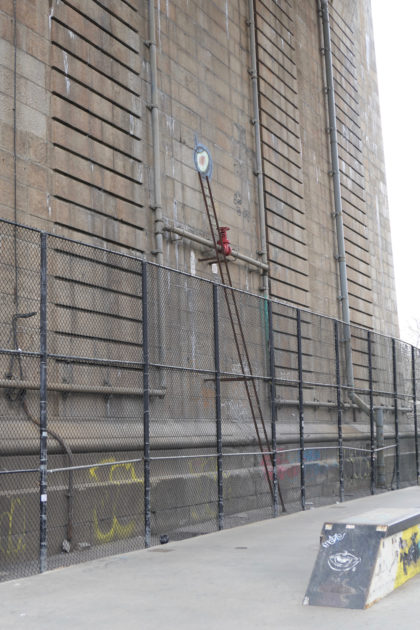 Now about that mall on E. Broadway under the Manhattan Bridge. I had been to 88 Palace, the restaurant on the north side of the street, for dim sum, but I had no idea that the south side was such a treasure. Walk through the doors and it looks like nothing special—a bunch of shops selling cheap clothes, herbs, and stuff. Keep going, however, and you end up in a dramatic open-air fruit hall. Beyond that is the indoor part of the New York Supermarket, and I don’t know that I’ll buy my Chinatown produce anywhere else from now on. Kabochas, daikon, watercress, gai lan, baby bok choy, long beans—the selection and quality are excellent.
Now about that mall on E. Broadway under the Manhattan Bridge. I had been to 88 Palace, the restaurant on the north side of the street, for dim sum, but I had no idea that the south side was such a treasure. Walk through the doors and it looks like nothing special—a bunch of shops selling cheap clothes, herbs, and stuff. Keep going, however, and you end up in a dramatic open-air fruit hall. Beyond that is the indoor part of the New York Supermarket, and I don’t know that I’ll buy my Chinatown produce anywhere else from now on. Kabochas, daikon, watercress, gai lan, baby bok choy, long beans—the selection and quality are excellent.
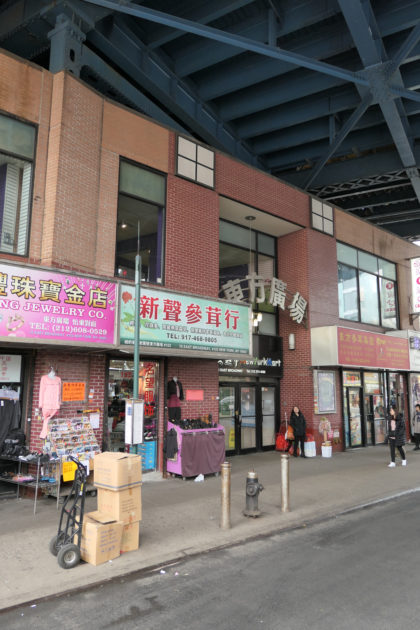

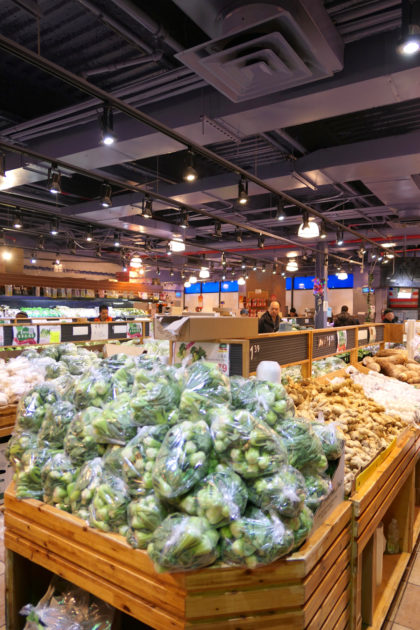 Back inside the New York Mart mall, you might think there’s no reason to go upstairs, but that’s where the magic is. What seem like empty stores are individual gallery spaces, collectively called Michael Werner’s Vitrine.
Back inside the New York Mart mall, you might think there’s no reason to go upstairs, but that’s where the magic is. What seem like empty stores are individual gallery spaces, collectively called Michael Werner’s Vitrine.
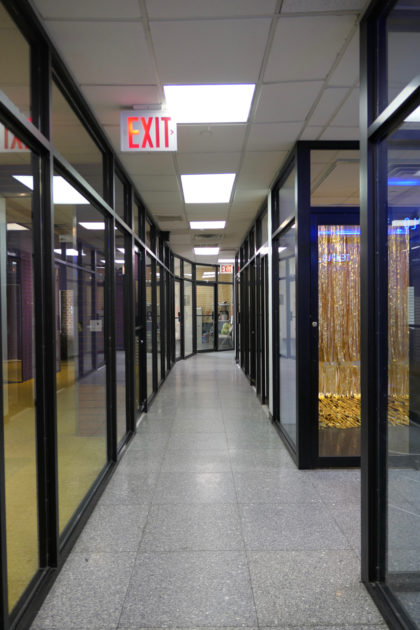
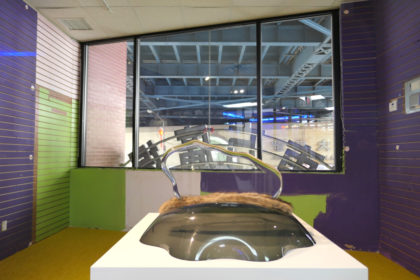 Turn a corner and you might run into the Templo fashion line’s shop/showroom; 2 Bridges Music Arts (one of the more wonderfully esoteric bookstore/music stores I’ve experienced, and I so regret not buying the “I Just Wanna Dance” shirt); interior designer Michael Bargo‘s office (and shop?); vintage clothier James Veloria; Mirabelle Marden‘s “real-life mood board” market/gallery; or, best of all, the Philosophical Investigation Agency. The latter is where Todd Altschuler offers his services: conceptual forensics, argumentation and strategy inspection, question generation, lost self-identities, and more. If you don’t know what means—well, go ask.
Turn a corner and you might run into the Templo fashion line’s shop/showroom; 2 Bridges Music Arts (one of the more wonderfully esoteric bookstore/music stores I’ve experienced, and I so regret not buying the “I Just Wanna Dance” shirt); interior designer Michael Bargo‘s office (and shop?); vintage clothier James Veloria; Mirabelle Marden‘s “real-life mood board” market/gallery; or, best of all, the Philosophical Investigation Agency. The latter is where Todd Altschuler offers his services: conceptual forensics, argumentation and strategy inspection, question generation, lost self-identities, and more. If you don’t know what means—well, go ask.
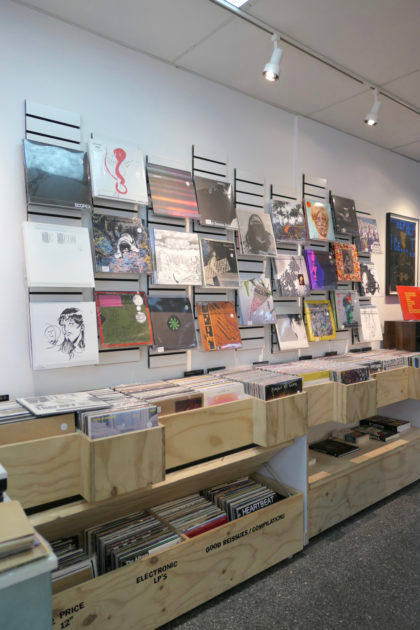
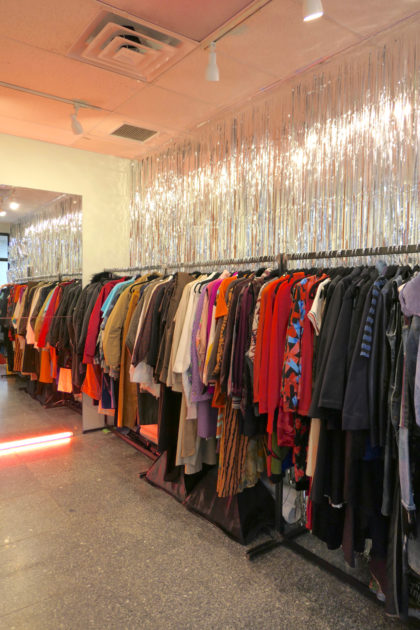
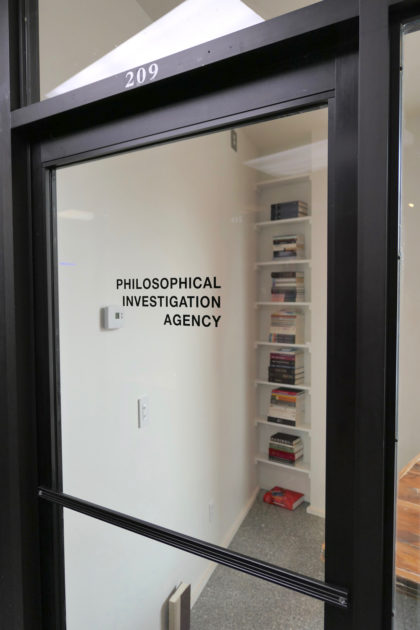 Previous Field Trip posts:
Previous Field Trip posts:
• Governors Island (Reprise)
• Storm King Art Center
• Red Hook
• Sunset Park
• Bay Ridge
• The Met Breuer
• ICP Museum
• Noguchi Museum & Socrates Sculpture Park
• The Fisher Landau Center for Art
• The High Bridge
• The Broad
• Crown Heights
• Spuyten Duyvil
• New York Botanical Garden
• Bed-Stuy
• The New Whitney Museum
• Bushwick-ish
• The Rockaways
• Greenpoint
• Wave Hill
• Governors Island
• F.D.R. Four Freedoms Park
• Litchfield County, Conn.
• One Wall Street
• Behind the Scenes at Grand Central Terminal
• The Howard/Crosby Microneighborhood
• Federal Reserve Bank of New York
• East River Ferry
• Museum of American Finance




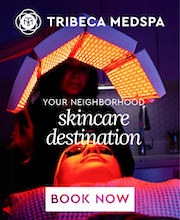


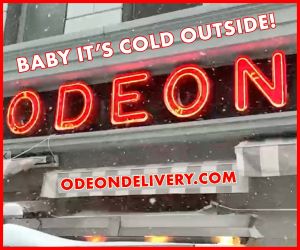






Nice
photos.
Those cards are wedding invitations! I had mine printed there.
There was a large Pathmark supermarket at the space where one Manhattan space is built. Lore history about it from here: http://www.thelodownny.com/leslog/tag/pathmark
When my older son was playing baseball at the nearby ballfields, my younger son & I would sometimes venture over the Pathmark, where we would stock on on basics for about half what they would cost in Tribeca. The Pathmark also had vending machines selling 30+ year old baseball cards, which was a bit quirky.
It’s horribly tall & visually unappealing replacement is the areas 432 Park Avenue- visible from everywhere, and ruining the views of the Manhattan Bridge.
I miss the Pathmark!! Used to shop there all the time. One Manhattan Square is so ugly – it was a complete political coup between Bloomberg and developer..It took years but they got what they wanted. It is really ugly but hopefully some really nice people will move in and appreciate the neighborhood.
Mayor deBlasio and Councilperson Margaret Chin also helped along “One Percent” Manhattan Square.
This is an excellent article. Thanks for the comprehensive overview. I’m from Sydney, Australia, but I like to follow changes in New York. I have visited there regularly since 1996 and it’s amazing to keep learning about it.
I’m quite appalled at One Manhattan Square and how it ruins the view of Manhattan Bridge from many vantage points.
It reminds me of an infamous building in Sydney that ruins the view of the Sydney Harbour Bridge from many angles. The building is the Blues Point Tower.
Great read! Thanks a lot.